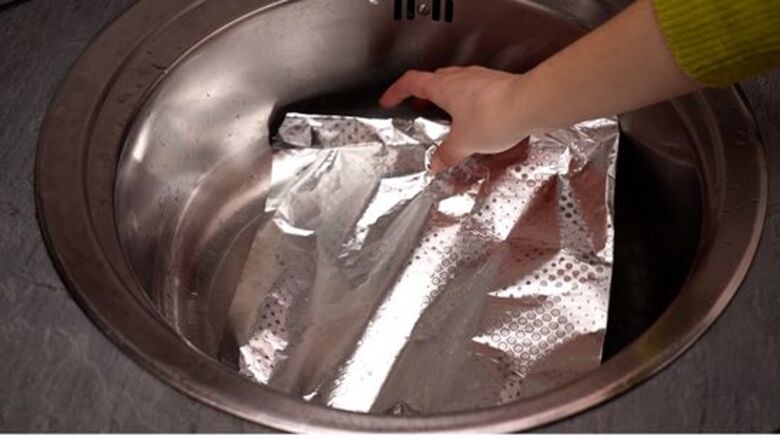
views
X
Research source
Thankfully, you can clean your silver with nothing more than baking soda and water, and get rid of tarnish with the added help of aluminum foil. We’ll show you how to do both methods, and offer plenty of helpful tips along the way so you can get the deepest clean.
- Remove tarnish from silver items by placing them in a heat-proof container lined with aluminum foil. Then add 1 tbsp of baking soda (17 g) to a pot of boiling water
- Pour the boiling water mixture over your silver and watch the tarnish vanish. Then, rinse the silver under cool water and dry it with a microfiber cloth.
- Alternatively, rub the silver with a microfiber cloth coated in a paste of 3 parts of baking soda and 1 part of water, then rinse it under cool water for a quick clean.
Removing Tarnish with Baking Soda and Aluminum Foil
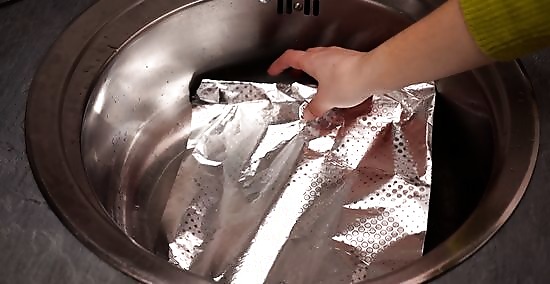
Line a deep, heat-proof container with aluminum foil. Find a container large enough to hold your silver items and which will allow them to be covered in water. Make sure it’s heat-proof, too, since it’ll be filled with boiling water in a moment. A kitchen sink works great, as does a glass oven dish. Then, line the container with a sheet of aluminum foil. The more surface area you can manage to cover, the better. Or, use a disposable aluminum foil baking dish. Avoid using a stainless steel container, which can react with your silver and blacken or scratch it.
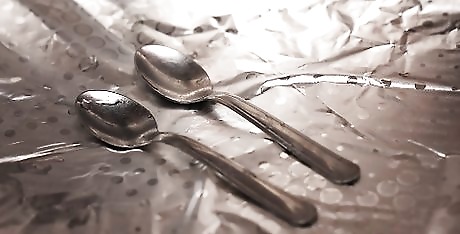
Place your silver items on the aluminum. Set your silver jewelry, utensils, or other items in a single layer on the aluminum foil, shiny side up. Make sure that each item makes physical contact with the aluminum, and that no 2 items are touching each other. Wrap larger items like cups in their own sheet of foil to maximize their contact with the aluminum. If your silver items are recently used or have superficial grime, hand-wash them with hot water, a microfiber cloth, and mild dish soap beforehand to make the baking soda method more effective.
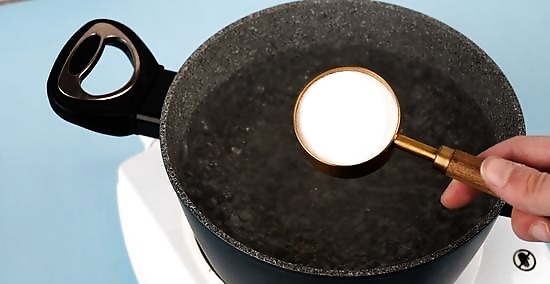
Add 1 tbsp of baking soda (17 g) to 4 cups (950 mL) of boiling water. On the stove, bring about 4 cups (950 mL) cups of water to a boil (or however much you need to fully submerge your silver). Once it’s boiling, add 1 tbsp (17 g) of baking soda to the water. Give it a quick mix to help dissolve it. For a stronger clean, also add 1 tbsp of sea salt, or 0.5 cups (120 mL) of white vinegar, or both to the boiling water. Note that you can also add the cleaning agents in later steps, once the silver is submerged in hot water, if you’d like to more clearly observe the fun chemical reaction.
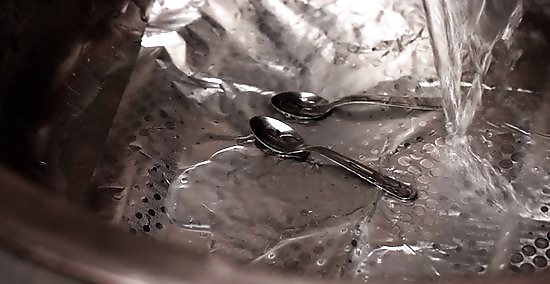
Pour the boiling water mixture over the silver. Slowly and carefully pour the water into the container with the aluminum foil and the silver, until the silver items are totally submerged. Watch as the tarnish disappears and your items are returned to their original, shiny state! The silver sulfide, or tarnish, on your silver items converts back to a metallic silver thanks to the presence of the aluminum and baking soda, which strip away the sulfur in the silver sulfide. Your silver may foam as it comes into contact with the water. That’s totally normal, and is a sign that the reaction is working.
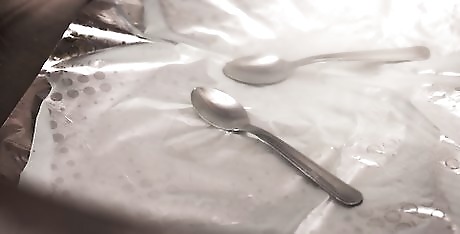
Soak the silver for 10 minutes, or repeat the process for a deeper clean. Allow the silver to sit in the hot water bath for 10 minutes to let the baking soda and aluminum really dig into the tarnish and remove the discoloration. If the foaming reaction stops but your silver is still tarnished, feel free to drain the water, then add more to renew the chemical process. Remember that the water is hot. Let it cool for several minutes before you drain it.
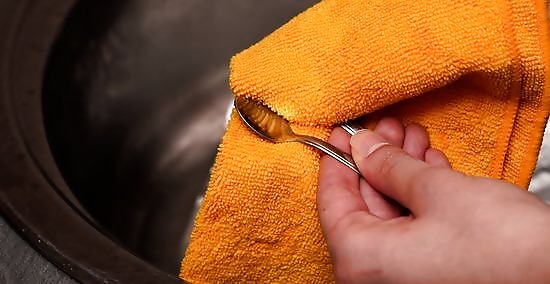
Rinse the silver under cold water and dry it with a microfiber cloth. Once the water has cooled, remove the silver from the container and rinse it under a cool tap to remove any residue. Then, wipe it dry with a microfiber cloth. Move the cloth in small circles to buff the silver as you dry it, polishing it and restoring its shine. Pour the excess water down the kitchen sink to dispose of it. Throw away the aluminum foil, as it’s no longer food-safe.
Scrubbing with Baking Soda Paste
Mix 9 oz (255 g) of baking soda with 3 oz (85 g) of hot water. In a small bowl, mix together 3 parts of baking soda with 1 part of hot water to make a fairly thick paste. Use a fork to stir the mixture until it’s a uniform consistency.
Rub the paste onto the silver with a microfiber cloth. Place a dab of the baking soda paste onto a soft microfiber cloth. Then, gently rub the silver all over with the cloth, working in small circles to better target any grime or stains. Switch to a toothbrush for hard-to-reach nooks or crevices, rubbing the bristles lightly over the surface. Use a light touch to scrub away any surface grime, but avoid any deep or forceful scouring, which may scratch your silver items.
Rinse the silver under cold water and dry it with a microfiber cloth. Once you’ve rubbed away as much grime as possible, run the silver under a cold faucet to rinse away the baking soda paste and any residue. Then, wipe it dry with a clean microfiber cloth, working in small circles as before to also buff your silver to a nice shine. Note that this method won’t de-tarnish your silver, but is great for a light clean, or to prepare your silver for a more thorough method.












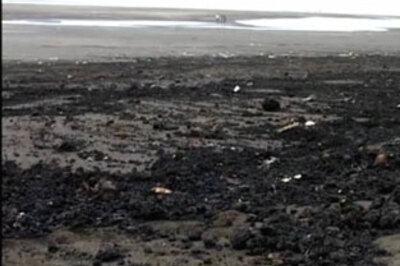






Comments
0 comment